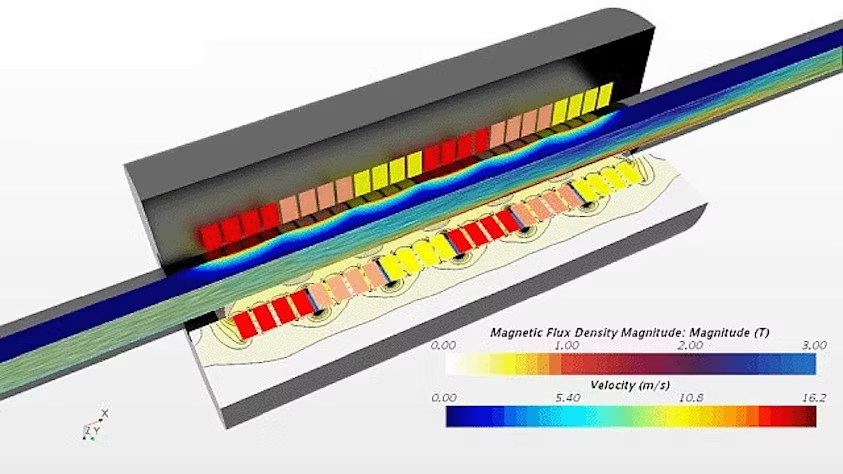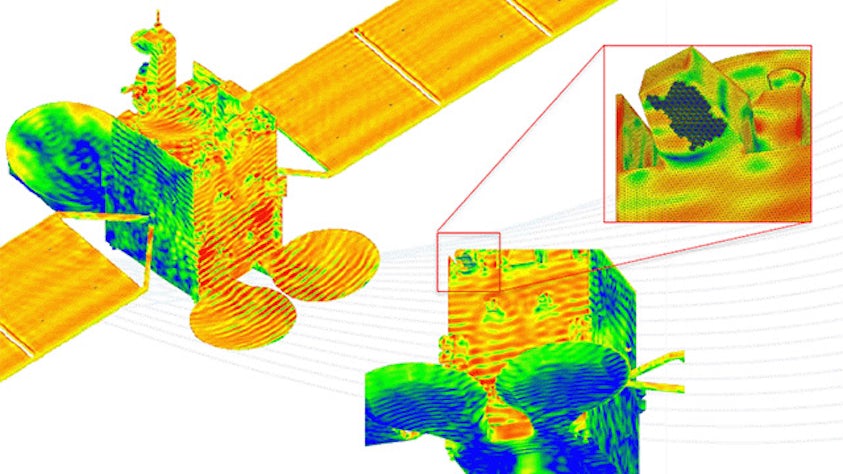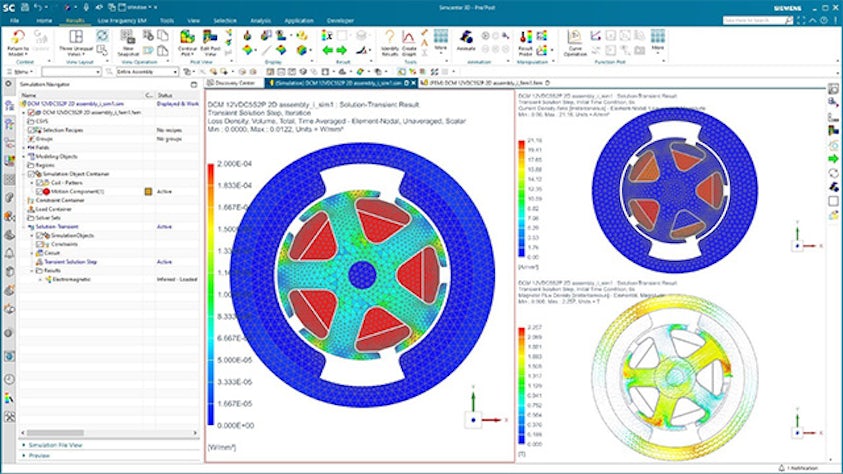Simcenter 저주파 전자기 시뮬레이션을 통해 전기 모터, 발전기, 변압기, 액추에이터 등 다양한 에너지 변환 장치를 시뮬레이션할 수 있습니다. 이 솔루션을 사용하면 엔지니어는 저손실(고효율) 및 높은 처리량으로 에너지 변환을 최적화하는 동시에 재료 비선형성, 히스테리시스, 열 효과 및 움직이는 컴포넌트를 고려할 수 있습니다. 정적, 조화 및 천이 솔버가 지원됩니다.

전자기 시뮬레이션은 복잡하고 잡음이 많은 전자기 환경에서 효율성을 개선하고 호환성을 확보하며 성능을 보장하는 데 도움이 됩니다.
시간 및 주파수 기반, 선형 및 비선형, 유한 및 경계 요소 등 다양한 전용 솔버가 빠른 초기 분석부터 최종 검증을 위한 특유의 사실적 구현에 이르기까지 다양한 시뮬레이션을 통해 혁신적인 CAE 프로세스를 제공합니다.

고성능 전자기 시뮬레이션을 사용하면 전자기 호환성(EMC) 및 전자기 간섭(EMI) 문제를 해결하고 연결 및 레이더 성능을 향상시킬 수 있습니다.
Simcenter 저주파 전자기 시뮬레이션을 통해 전기 모터, 발전기, 변압기, 액추에이터 등 다양한 에너지 변환 장치를 시뮬레이션할 수 있습니다. 이 솔루션을 사용하면 엔지니어는 저손실(고효율) 및 높은 처리량으로 에너지 변환을 최적화하는 동시에 재료 비선형성, 히스테리시스, 열 효과 및 움직이는 컴포넌트를 고려할 수 있습니다. 정적, 조화 및 천이 솔버가 지원됩니다.

Simcenter 고주파 전자기 솔루션은 안테나, ADAS 레이더, 전기 파워트레인, 센서 배치 등에 관한 응용 분야 뿐 아니라 파동 전파의 맥락에서 적용되는 전자기 해석도 지원합니다. 전자기파는 데이터 통신의 맥락에서 사용되는 경우가 많습니다. 이러한 파동이 바람직하지 않은 경우가 종종 있으며, 이로 인해 발생하는 호환성 문제는 EMC(전자기 호환성) 및 EMI(전자기 간섭) 해석을 통해 해결할 수 있습니다. 전파 및 점근 솔버가 모두 지원됩니다.

성능과 지속성 모두와 관련하여 전기 기계 설계의 중요성이 점점 커지고 있습니다. Simcenter는 초기 개념부터 시스템 통합에 이르기까지 전자 기계 설계를 검증할 수 있는 다중영역 솔루션과 제어 전략 검증을 위한 모델을 비롯한 상세 성능 엔지니어링을 제공합니다. 전기 모터의 전자기 및 열적 측면을 모두 시뮬레이션할 수 있습니다.
